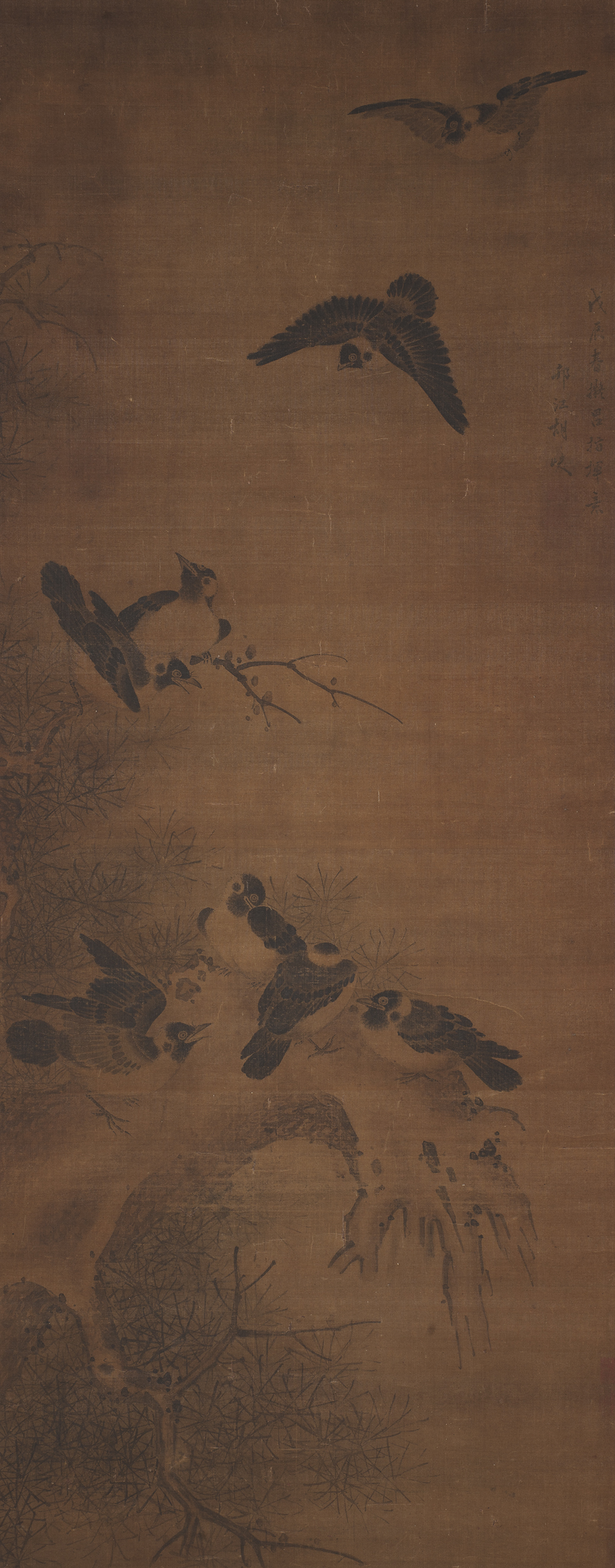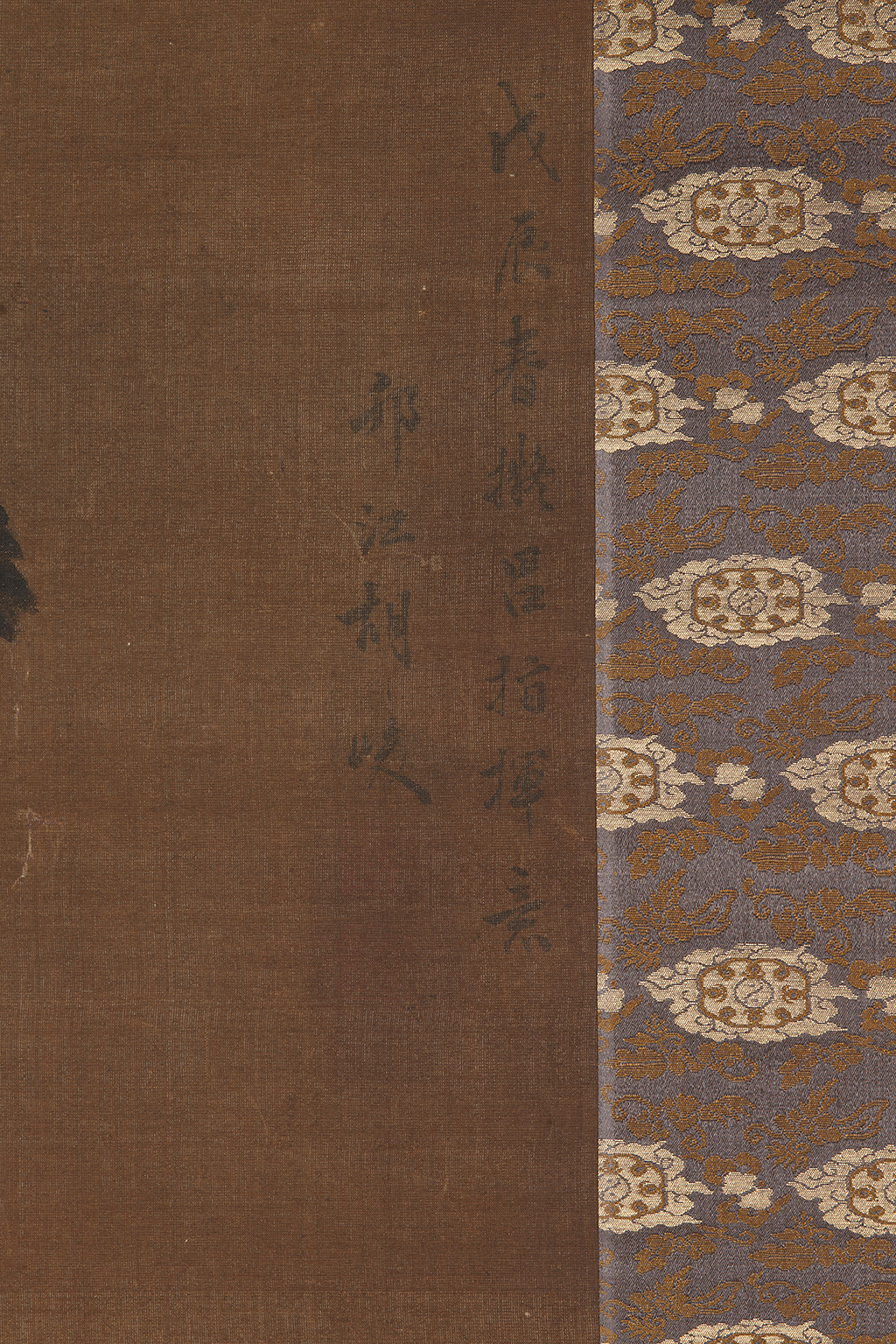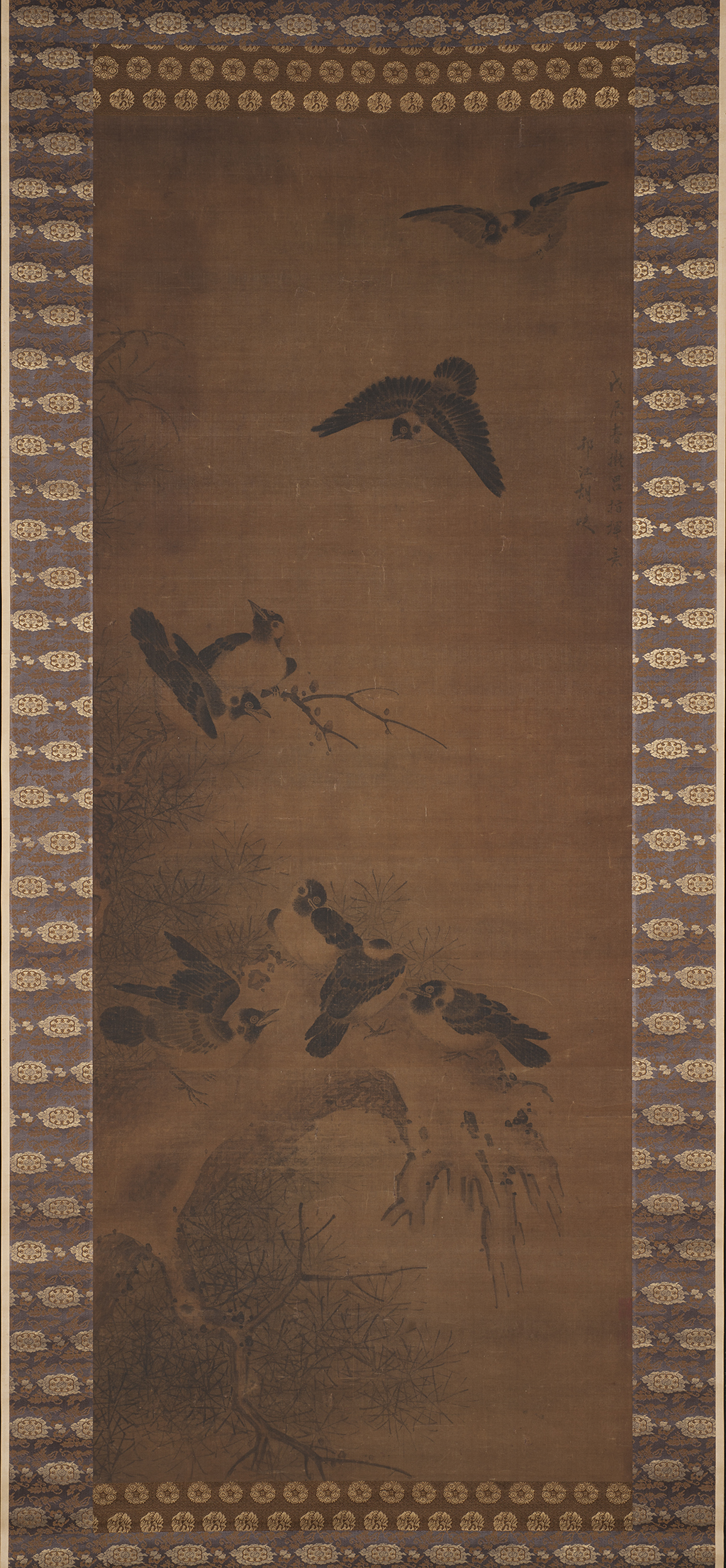Exhibition Label:
Asian Gallery, Summer 2003, Youmi Efurd (Didactic panel)
Flora & Fauna
Chinese bird-and-flower painting, fostered by imperial patronage, flourished during the Song dynasty (960-1297). The Song emperor Huizong (r. 1101-1126) himself was a painter of flower and bird subjects of considerable renown, and under his patronage the Court Academy fostered the tradition as never before, or indeed since. Huizong’s preference was for the most literal renderings of the details of nature.
The notion of the Court Academy, which had been established by Huizong in the Song, was restored in the Ming dynasty (1368-1644). The early Ming Academy of painters reinvigorated the genre of flower and bird painting-adopting the Song style of rendering images in meticulous detail-which continued into the Qing dynasty (1644-1911).
In Chinese tradition, the meaning of the flower and bird symbolism is multi-layered. It could be aesthetic, philosophical, religious, and even political, according to the context. The motifs of plants and birds could be used to express an endless range of meanings and sentiments.
Chinese bird-and-flower painting was transmitted to Japan by Chinese visitors during the Edo period (1615-1868). As so often happened in Japanese cultural history, native artists made new combinations of traditions that had been kept distinct in China. Academic and literati influences from China were often mixed together with the Japanese preference for dramatic asymmetrical compositions and evocative brushwork. This led to a new form of bird and flower painting that owed much to China and yet was fully expressive of the Japanese spirit.
Archive Label 2003 (version 1):
This is the only existing painting by the little-known artist Hu Jun. According to his own inscription on the upper right corner, Hu was from Yangzhou, one of the major art centers in China. The orioles depicted in this painting are regarded as harbingers of spring and are common artistic motifs in China. Hu's inscription also says that his orioles were modelled after those of the Ming dynasty artist Lu Ji (1477-after 1520), whose style in turn imitates that of an eleventh century artist.
In traditional Chinese art education, the artist begins by imitating past masters. Hu Jun's "creativity" is seen only in the depiction of the various poses of birds. The painting is dated in the ancient Chinese dating system known as the Cycle of Sixty, and the date corresponds to the year 1868 or 1928
Exhibition Label:
Asian Gallery, Summer 2003, Youmi Efurd
Bird and flower paintings were very popular in the court of the Song dynasty (960-1279). During the early Ming dynasty, this theme regained its former stature at the Beijing court. Perhaps the most famous painter of the genre during the early Ming was Lu Ji (active ca. 1500), who elevated bird and flower painting to a new height to satisfy the decorative tastes of the court. The artist’s inscription says that this painting follows the style of Lu Ji.
Little is known about the painter Hu Jun. According to his own inscription on the upper right corner, Hu was from Yangzhou, one of the major art centers in China. The orioles depicted in this painting are regarded as harbingers of spring and are a common artistic motif in China.
Archive Label:
As heralds of spring, orioles were often depicted by Chinese artists. The eight orioles in this painting were done by the little-known artist Hu Chun. According to the artist's inscription on the upper right corner, the painting was modelled after the Ming Dynasty artist Lu Chi (1477-after 1520), whose style in turn imitates that of an eleventh-century artist. In traditional Chinese art education, the artist begins by imitating past masters. A typical example of that method, this painting uses the style and subject matter that had been used for many centuries. Hu Chun's creativity is seen only in the depiction of the various poses of the birds. The painting is dated in the ancient Chinese dating system known as the Cycle of Sixty, and the date corresponds to the year 1808 or sixty years earlier. (Without knowing the date of the artist, it is impossible to decide the date of the painting.)




